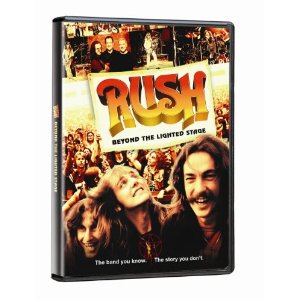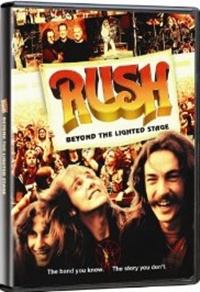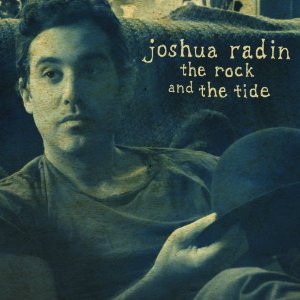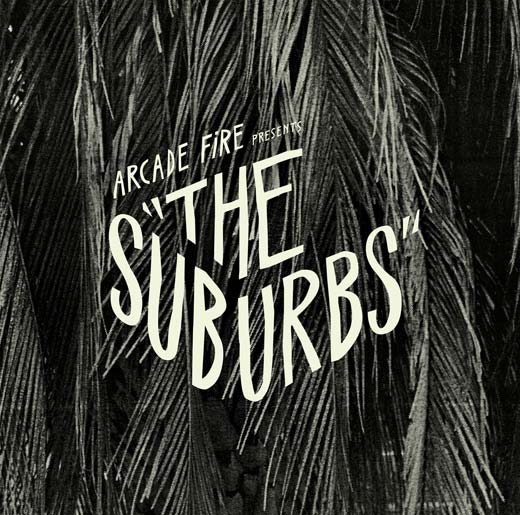The days of getting lost in an album have passed me by. This year, I really tried to rekindle that lost listening art of playing entire albums – instead of compiling playlists in iTunes. It hasn’t been easy. I think the ease of digitally downloading albums has dried up the sense of anticipation that used to come with a purchase of a physical copy of an album at a record store. Now, the record store is just part of the millions and billions of distractions that await you on the Internet – much of it for free.
Now, I don’t mean to go on a diatribe against the devaluation of music because of the Internet, but one thing that has occurred because of the sheer plethora of music available with one click of your mouse is a kind of ADD when it comes to listening to music. My colleague both here and at Popdose (that would be Jeff Giles) has written about it more eloquently than I can, but the sentiment is very much the same: because of the volume of music that is available in downloadable form, it’s difficult for me to form a deep connection with an entire album. If we could flash back 20 years, it would have been a different story to feature 10 albums. Nowadays, it’s rare that an entire album can hold my attention.
But, never say never, right?
What you will find here are mostly my favorite songs of 2010, but occasionally you’ll find entire albums. I know, after all that “downloadable music is ruining my attention span” crap, I say that there were some albums that really captured my attention. But like I said, I’ve tried to rekindle the art of listening to entire albums, and while I feel I’m losing that battle, I haven’t entirely lost the war. So, here we go with my top 10 of 2010!
 10. Paper or Plastic, “The Honest Man”
10. Paper or Plastic, “The Honest Man”
Every now and then a link arrives in my inbox that lives up to the hype. Case in point is the New York group, Paper or Plastic, who has a kind of Ben Folds thing going on with “The Honest Man.” The song is an example of some very lovely power pop, and you’ll find yourself humming the chorus after a few listens. The band is giving away their EP Ron Save the King on their website. Get it, if only for “The Honest Man.”
 9. Somebody’s Darling, “Lonely”
9. Somebody’s Darling, “Lonely”
In my review of this album, I was upfront about my allergy to country music – even if it’s alt-country. But Somebody’s Darling has enough rock-n-roll in them to make the musical waters safe for a guy with my particular affliction. “Lonely” is by far my favorite track on the album, and it’s not difficult to hear why. The song is just one big fireball of energy with a great driving beat and some wailing guitars. But it’s the full-throated vocals from Amber Ferris that takes this song from good to great.
 8. Daft Punk: Tron Legacy
8. Daft Punk: Tron Legacy
I used to be an avid soundtrack collector, but those days have passed me by. When I got a hold of the “Tron Legacy” soundtrack, however, it reminded me what I used to love about these kind of soundtracks: the combination of standard orchestration with tasteful touches of synth laced in for good measure. And that’s what Daft Punk has delivered in what could have been some cheesy-ass electronica music cues. Serving the weighty tone of the movie, Daft Punk avoided the familiar clubby territory of their music and went right for a fusion of classic music cues with flourishes of electronica.
 7. Kanye West, “Dark Fantasy”
7. Kanye West, “Dark Fantasy”
While most music critics are jizzing in their pants over Kanye’s My Beautiful Dark Twisted Fantasy, I was underwhelmed by most of it. However, give me a great hook, and I’ll take West’s tone-deaf singing any day. And Kanye delivers both on the album opener, but thankfully keeps the singing to a minimum. Sure, the chorus of the song is tremendously catchy, but West also adds some lyrical heft with rhymes like these:
Hey, teacher, teacher / Tell me how do you respond to students/
And refresh the page and restart the memory / Respark the soul and rebuild the energy / We stopped the ignorance, we killed the enemies / Sorry for the night demons still visit me / The plan was to drink until the pain over / But what’s worse, the pain or the hangover?
 6. Devo, “Sumthin’”
6. Devo, “Sumthin’”
Devo was such a part of my high school and college experience, that it was so refreshing to hear that classic Devo sound resurrected for 2010. With “Sumthin’,” it’s like it’s 1982 all over again, and it’s heartening that the Spud Boys, after their breakup and detour into the world of TV soundtrack work, haven’t lost that jerkin’ back and forth feel on this song. The entire album is good, but this track stands out as the strongest on the album – and one that I keep coming back to over and over and over.
 5. Prince, “Lavaux”
5. Prince, “Lavaux”
In this day of the instant download, how do you create a buzz around an album release? Well, if you’re Prince, you make it difficult to obtain the album outside of the certain geographic region. Case in point is the release of 20Ten – which Prince only gave away in the UK to readers of The Daily Mirror and The Daily Record. He undoubtedly knew that once the physical CD was ripped and uploaded to a torrent, it would go viral and people would be talking about the entire album – and not just a single. Alas, the album for me was more of a miss than a hit. But when Prince did “hit,” as he did in “Lavaux,” it was reminder of the kind of sublime pieces of music he’s capable of making.
 4. Chromeo, “Hot Mess”
4. Chromeo, “Hot Mess”
This Canadian duo’s brilliant lead track on their 2010 release, Business Casual, is a sonic delight with some wonderful ‘80s throwback production techniques. Plus the fact that song is just pure pop joy doesn’t hurt matters at all. Pretty good work from a group whose lead singer is working on a PhD at Columbia University.
 3. Arcade Fire, “Suburban War”
3. Arcade Fire, “Suburban War”
Another album that’s bound to make many ‘o critic’s top 10 this year, and yet it’s another album that really didn’t impress me. But what did impress me was “Suburban War” with its ’60s-era Byrds-inspired guitar work and hypnotic vocals. If the song stayed with that tempo and style, it would have been a kind of sleepy standout track on the album, but Arcade Fire did something interesting: they upped the tempo (and the tension) of the song for the final ride out that masterfully raised the emotional depth – which is something rare in popular music.
 2. Rush, “Caravan”
2. Rush, “Caravan”
I don’t apologize for my love of Rush, but I’m not such a fanboy that I will laud everything the band puts out. The two singles they released in conjunction with their Time Machine Tour are a study in contrasts. “Caravan” has a number of classic Rush flourishes, but it’s also a song that has enough quirky elements that it demonstrates Rush’s commitment to progressive rock in that, they are never quite comfortable resting on their reputation. I have to admit to not liking the song when it first came out, but when I saw it performed live, it was such a blistering rocker that it quickly became a favorite in Rush’s oeuvre. I can’t say the same for “BU2B (Brought up to Believe)” – which I found a bit of retread of some of the weaker songs on Snakes & Arrows.
 1. The Gaslight Anthem, American Slang
1. The Gaslight Anthem, American Slang
If you’re a fan of rock anthems that’ll get you singing songs that sound like they were written during Bruce Springteen’s heyday, then you’ll fall in love with the Gaslight Anthem’s second full album release. Song after song exemplifies the best in this style of rock music. The album is free of any filler, and while the hybrid of Springsteen and the Clash suggests a lack of originality, The Gaslight Anthem are able to use the old wine skins that has influenced their music and make a new wine that’s tasty, taut, and thunderous.

 On paper, I should like this album. It has many of the elements I like in rock music: big themes, a narrative, and prog-rock flourishes. But this is quite possibly the worst album I have heard in this genre for a long time – and yet I admire the moxie of Epigene, the husband and wife duo of Sean Bigler and Bonnie Lykes. I mean, who has the balls to produce a two-CD concept album – especially in 2010? Well, I think we know the answer to that question, but simply producing such an opus of this scale isn’t enough; one has to have substance. And while the story of A Wall Street Odyssey (The, City, The Country and Back Again) isn’t short on earnestness, it lacks an important ingredient in rock operas: a certain amount of subtly, and a generous helping of hooks and thunderous power chords.
On paper, I should like this album. It has many of the elements I like in rock music: big themes, a narrative, and prog-rock flourishes. But this is quite possibly the worst album I have heard in this genre for a long time – and yet I admire the moxie of Epigene, the husband and wife duo of Sean Bigler and Bonnie Lykes. I mean, who has the balls to produce a two-CD concept album – especially in 2010? Well, I think we know the answer to that question, but simply producing such an opus of this scale isn’t enough; one has to have substance. And while the story of A Wall Street Odyssey (The, City, The Country and Back Again) isn’t short on earnestness, it lacks an important ingredient in rock operas: a certain amount of subtly, and a generous helping of hooks and thunderous power chords.
 10. Paper or Plastic, “The Honest Man”
10. Paper or Plastic, “The Honest Man”  9. Somebody’s Darling, “Lonely”
9. Somebody’s Darling, “Lonely”  8. Daft Punk: Tron Legacy
8. Daft Punk: Tron Legacy  7. Kanye West, “Dark Fantasy”
7. Kanye West, “Dark Fantasy”  6. Devo, “Sumthin’”
6. Devo, “Sumthin’”  5. Prince, “Lavaux”
5. Prince, “Lavaux”  4. Chromeo, “Hot Mess”
4. Chromeo, “Hot Mess”  3. Arcade Fire, “Suburban War”
3. Arcade Fire, “Suburban War”  2. Rush, “Caravan”
2. Rush, “Caravan” 

 One thing about Rush fans is that they crave more from the band, and the band is more than happy to fulfill that request. Case in point is the long awaited film, “Rush: Beyond the Lighted Stage” – the 106-minute movie that chronicles the band’s history from local Toronto high school and bar band, to the world’s biggest cult act.
One thing about Rush fans is that they crave more from the band, and the band is more than happy to fulfill that request. Case in point is the long awaited film, “Rush: Beyond the Lighted Stage” – the 106-minute movie that chronicles the band’s history from local Toronto high school and bar band, to the world’s biggest cult act.



 As one who was not all ga ga over Arcade Fire’s Neon Bible, I had some apprehension about the Canadian group’s third release, The Suburbs. But from the title track to the album closer, The Suburbs is sonic journey that takes the listener through an experience that’s meant to be listened to in one sitting. It’s both a nostalgic and critical exploration of growing up in a time when instant gratification in communicating with one another was less common, and a time when days and hours lingered so when dramatic events happened, the contrast was much more profound. Stylistically, the group is progressing by incorporating more jaunty musical flourishes (“Suburbs”), and they have matured with thickly layered atmospherics that, at times, highlights things like the faux intellectual walls created by certain kids (“Rococo”). While The Suburbs is a very strong and nuanced album by the band, it feels laden with too much musical filler at times – the album clocks in at 60 minutes. Perhaps in The Suburbs Arcade Fire is reacting to the Internet culture where the sense of anticipation and appreciation of communicating with one another has waned, but the sense of slowness that pervades some of the album makes their exploration of life in the suburbs less intellectually weighty than just downright weighted. (Merge 2010)
As one who was not all ga ga over Arcade Fire’s Neon Bible, I had some apprehension about the Canadian group’s third release, The Suburbs. But from the title track to the album closer, The Suburbs is sonic journey that takes the listener through an experience that’s meant to be listened to in one sitting. It’s both a nostalgic and critical exploration of growing up in a time when instant gratification in communicating with one another was less common, and a time when days and hours lingered so when dramatic events happened, the contrast was much more profound. Stylistically, the group is progressing by incorporating more jaunty musical flourishes (“Suburbs”), and they have matured with thickly layered atmospherics that, at times, highlights things like the faux intellectual walls created by certain kids (“Rococo”). While The Suburbs is a very strong and nuanced album by the band, it feels laden with too much musical filler at times – the album clocks in at 60 minutes. Perhaps in The Suburbs Arcade Fire is reacting to the Internet culture where the sense of anticipation and appreciation of communicating with one another has waned, but the sense of slowness that pervades some of the album makes their exploration of life in the suburbs less intellectually weighty than just downright weighted. (Merge 2010)